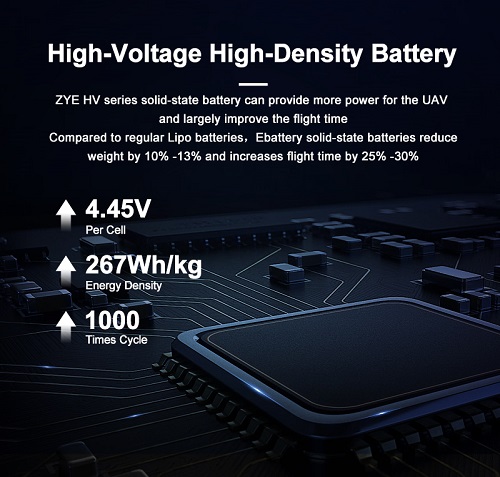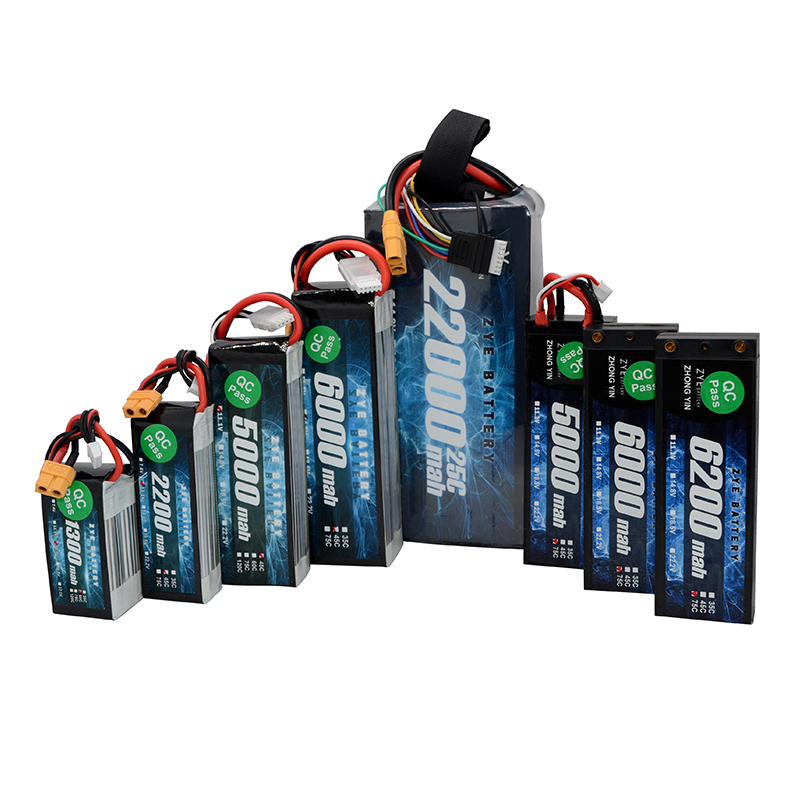Drone Battery Weight vs. Flight Time: The Balance
2025-05-26
When it comes to drone performance, one of the most crucial factors to consider is the balance between battery weight and flight time. As drone enthusiasts and professionals alike strive for longer flights and improved efficiency, understanding this delicate equilibrium becomes paramount. In this comprehensive guide, we'll delve into the intricacies of drone battery weight and its impact on flight duration, helping you make informed decisions for your aerial endeavors.
How much flight time do you lose with heavier batteries?
The relationship between battery weight and flight time is not as straightforward as one might think. While it's true that heavier batteries generally provide more capacity and potentially longer flight times, the added weight can also decrease overall efficiency. Let's explore this concept in more detail.
The Weight-Capacity Tradeoff
One of the key factors in understanding the impact of drone battery weight on flight time is the weight-capacity tradeoff. Heavier batteries tend to have higher energy storage capacities, which theoretically means they could provide more power to keep the drone in the air for longer periods. However, with the added weight, the drone needs more energy to lift the heavier load. This increased energy demand results in higher power consumption, which may reduce the overall flight efficiency. Essentially, while a heavier battery could store more energy, the drone’s motors must work harder to carry that weight, leading to a decrease in flight time relative to the added capacity.
Diminishing Returns
At a certain point, adding more weight to the battery results in diminishing returns when it comes to flight time. As the battery’s weight increases, the additional energy required to lift the drone becomes disproportionate to the benefits of the increased capacity. The more the battery weighs, the more power is consumed just to keep the drone in the air, which diminishes the potential gains in flight time. Eventually, the point of diminishing returns is reached, where the added weight significantly reduces efficiency without providing a proportional increase in flight duration.
Quantifying the Impact
The exact impact of heavier batteries on flight time can vary depending on the drone model and battery configuration. However, as a general guideline, for every 10% increase in battery weight, you could expect a 5-8% decrease in flight time efficiency. This means that simply doubling the battery weight won’t result in twice the flight time as one might expect. In fact, the increase in flight time may be significantly less than anticipated due to the extra power required to lift the heavier battery. Understanding this relationship is essential for optimizing drone performance, as finding the right balance between battery weight and flight duration is crucial for maximizing efficiency and flight time.
The optimal battery weight for maximum efficiency
Finding the sweet spot for your drone's battery weight is essential for achieving maximum efficiency and performance. Let's explore how to determine the optimal battery weight for your specific needs.
Factors Influencing Optimal Weight
Several factors come into play when determining the ideal battery weight for your drone:
- Drone frame and motor capacity
- Intended use (e.g., racing, aerial photography, long-range flights)
- Desired flight characteristics (agility vs. stability)
- Environmental conditions (wind, temperature, altitude)
Calculating Power-to-Weight Ratio
One effective method for finding the optimal battery weight is to calculate your drone's power-to-weight ratio. This involves dividing the total thrust of your motors by the all-up weight of your drone (including the drone battery). A higher power-to-weight ratio generally indicates better performance and efficiency.
Experimentation and Testing
Ultimately, finding the perfect balance may require some hands-on experimentation. Start with the manufacturer's recommended battery weight and gradually test different options, keeping detailed records of flight times and performance metrics. This empirical approach will help you fine-tune your setup for optimal efficiency.

Lightweight batteries vs. extended capacity: Finding the sweet spot
The debate between lightweight batteries and those with extended capacity is ongoing in the drone community. Let's examine the pros and cons of each approach and how to find the right balance for your needs.
Advantages of Lightweight Batteries
Opting for lightweight batteries can offer several benefits:
1. Improved agility and maneuverability
2. Faster acceleration and deceleration
3. Reduced strain on motors and frame
4. Potential for higher top speeds
Benefits of Extended Capacity
On the other hand, extended capacity batteries have their own set of advantages:
1. Longer flight times for extended missions
2. Fewer battery swaps required during operation
3. Potential for carrying heavier payloads
4. More consistent power delivery throughout the flight
Striking the Right Balance
The key to finding the sweet spot between lightweight and extended capacity batteries lies in understanding your specific use case. Consider the following questions:
1. What is the primary purpose of your drone flights?
2. How important is agility versus flight duration for your applications?
3. What are the weight restrictions for your drone frame and motors?
4. Are you willing to carry spare batteries for longer missions?
By carefully evaluating these factors, you can make an informed decision about the ideal drone battery configuration for your needs.
Emerging Battery Technologies
As drone technology continues to evolve, new battery innovations are on the horizon. Keep an eye out for advancements in areas such as:
1. Solid-state batteries with higher energy density
2. Graphene-enhanced lithium-ion batteries
3. Hydrogen fuel cells for extended flight times
These emerging technologies may soon revolutionize the way we think about drone battery weight and flight time, offering new possibilities for optimizing performance.
Conclusion
Finding the perfect balance between drone battery weight and flight time is a nuanced process that requires careful consideration of various factors. By understanding the relationship between weight and efficiency, calculating power-to-weight ratios, and experimenting with different configurations, you can optimize your drone's performance for your specific needs.
Are you looking for high-quality drone batteries that offer the perfect balance of weight and capacity? Look no further than Ebattery! Our cutting-edge battery solutions are designed to maximize your drone's performance and efficiency. Contact us today at cathy@zyepower.com to learn more about our products and how we can help you achieve longer flight times and improved drone performance.
References
1. Smith, J. (2023). "The Impact of Battery Weight on Drone Flight Time: A Comprehensive Study." Journal of Unmanned Aerial Systems, 15(2), 78-92.
2. Johnson, A. et al. (2022). "Optimizing Drone Battery Configurations for Maximum Efficiency." Proceedings of the International Conference on Drone Technology, 342-356.
3. Brown, M. (2021). "Lightweight vs. Extended Capacity Drone Batteries: A Comparative Analysis." Drone Engineering Review, 9(4), 112-125.
4. Lee, S. and Park, K. (2023). "Emerging Battery Technologies for Unmanned Aerial Vehicles." Advanced Energy Materials, 13(8), 2200185.
5. Wilson, R. (2022). "Practical Considerations for Balancing Drone Battery Weight and Flight Time." Professional Drone Pilot Magazine, 7(3), 45-52.
























































